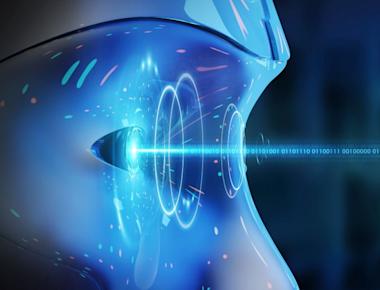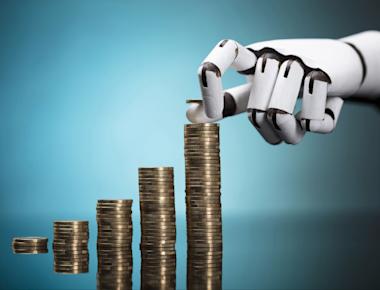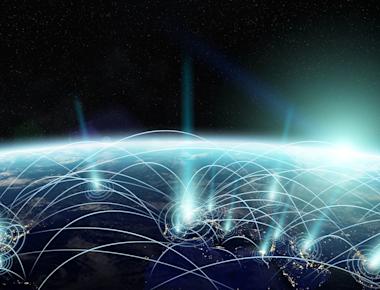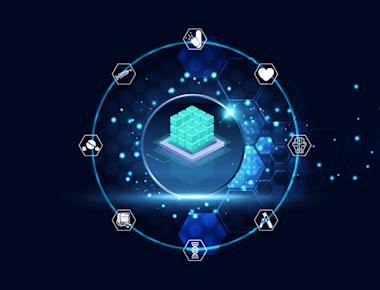

The ability to see things is wonderful, isn’t it? I mean, living without being able to read, watch movies, and look around would be tremendously difficult. Human vision and the concepts surrounding it have intrigued scientists for quite some time. And from this intrigue came computer vision. Computer vision is defined as a field of computer science that focuses on reproducing the same process undergone by humans to see in computers. The purpose is to get computers to process, analyze, and interpret images through computers. Now computer vision is projected to reach a market value of 48.6 billion dollars by 2022, so let’s take a look at some of the benefits it will provide.
Automotive Industry First, computer vision has enormous potential in the automotive industry, especially for autonomous vehicles. The whole point of computer vision is that the computer will be able to process information the same way humans do, which can be seen below.

Thus, computer vision can be another eye on the road to help keep drivers safe with applications in ADAS and RADAR systems. Autonomous vehicles are meant to operate without input from the passenger which means that it has to be able to navigate busy roads and frenzied freeways all on its own. Furthermore, it can also learn to understand driver moments which can be monumental in helping protect the safety of the driver. For example, it’s a driver becomes drowsy or becomes unaware of their surroundings, it can learn to alert the driver of their unsafe behavior in order to ensure the welfare of the passengers and the others on the road. Of course, this is more beneficial for non-autonomous vehicles since the driver actually has to stay aware of their surroundings, while autonomous vehicles don’t have to depend on that.
Retail Additionally, computer vision can also be useful for retail experiences. For many retail stores, it’s hard to gain a lot of insight from their customers in regards to what they want and what they may be buying. But, what computer vision can do is it can help detect spills, it can help detect crime, and it can also help detect when consumers need help with something. The utilization of computer vision by retail stores would also allow them to see what items their consumers might be having in their hands which could lead to quicker checkout times.
Security Another industry that computer vision that can be utilized is the security industry. Of course, the security industry is based on surveillance and keeping an eye out for those who may be having an intent to commit a crime or do something they shouldn’t. Computer vision comes into play because of its ability to better watch for suspicious activity. Computer vision allows security personnel, whether it’s police officers or the military or security guards, to have another eye out there with them, which not only protects them but can also help to ensure the welfare of the public.
Healthcare Healthcare professionals base a lot of their diagnoses and procedures off of scans. When most people go into the hospital or into a doctor’s office with pain in their body or some other type of symptoms, they are most likely going to have some type of scan taken, whether it’s an x-ray, a CAT scan, or an MRI. Now, computer vision can come into play because it eliminates the middleman of a radiologist to read through a lot of these different scans. Computer vision is better able and better equipped to find out what’s wrong with the patient and to look at the most minute details within the scans taken.
Agriculture For agriculture, we can see that computer vision can also have tremendous effects in this industry. When people go to harvest crops, they often don’t know the best path to take to get all the crops in the most efficient manner possible. Now, combined with a drone, computer vision could be used to fly over crops and see which crops are ready to be harvested and then also formulate a path through another program that a farmer or harvester could use to be the most efficient. Additionally, one using computer vision, we can also identify where the weeds are or other harmful plants that may harm the crop. Every year there are tons and tons of herbicides use that not only kill the weeds but can also get on plants that many people receive. However, there’s been an estimate that 90% of herbicides could be cut down by singling out where the weeds are exactly so that herbicide can only be sprayed on them.
Overall, computer vision has a lot of potential for the world and for the technological industry, and many others. Computer vision aims to replicate the human process of sight, which is a hefty endeavor in itself. However, with the advances already made in this computer science field, I believe computer vision will be changing our lives faster than we know it.
Sources
Babich, N., & Nick. (2020, July 28). What is Computer Vision & How Does it Work? An Introduction: Adobe XD Ideas. What Is Computer Vision & How Does it Work? An Introduction. https://xd.adobe.com/ideas/principles/emerging-technology/what-is-computer-vision-how-does-it-work.
Marr, B. (2019, April 8). 7 Amazing Examples Of Computer And Machine Vision In Practice. Forbes. https://www.forbes.com/sites/bernardmarr/2019/04/08/7-amazing-examples-of-computer-and-machine-vision-in-practice.
Saxena, A. (2019, December 20). Exploring the Potential of Computer Vision Across Industries. https://www.einfochips.com/blog/exploring-the-potential-of-computer-vision-across-industries.
Subscribe to our newsletter!
Quick Links
Legal Stuff





